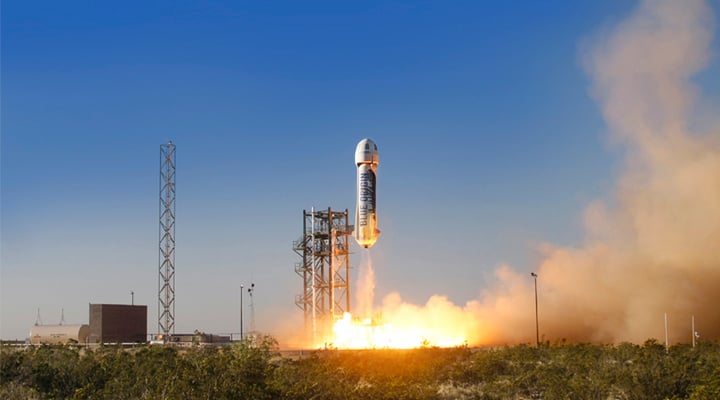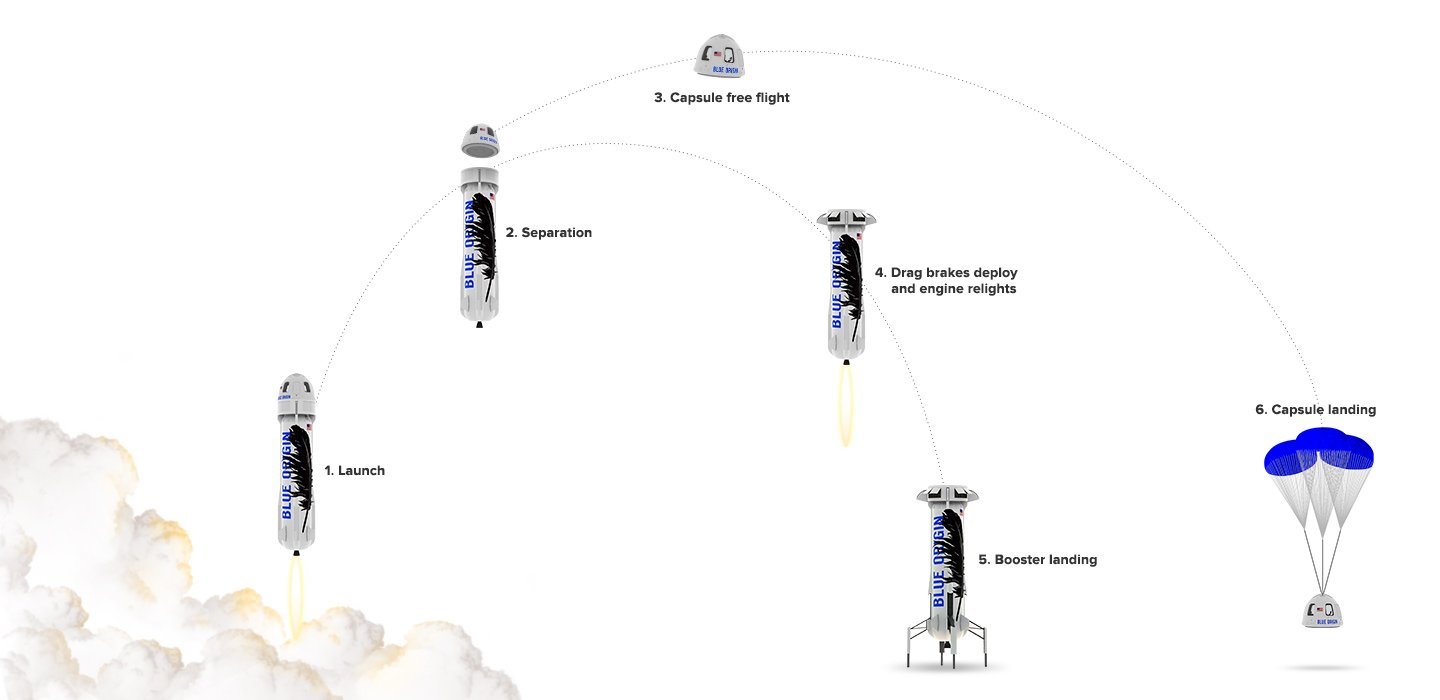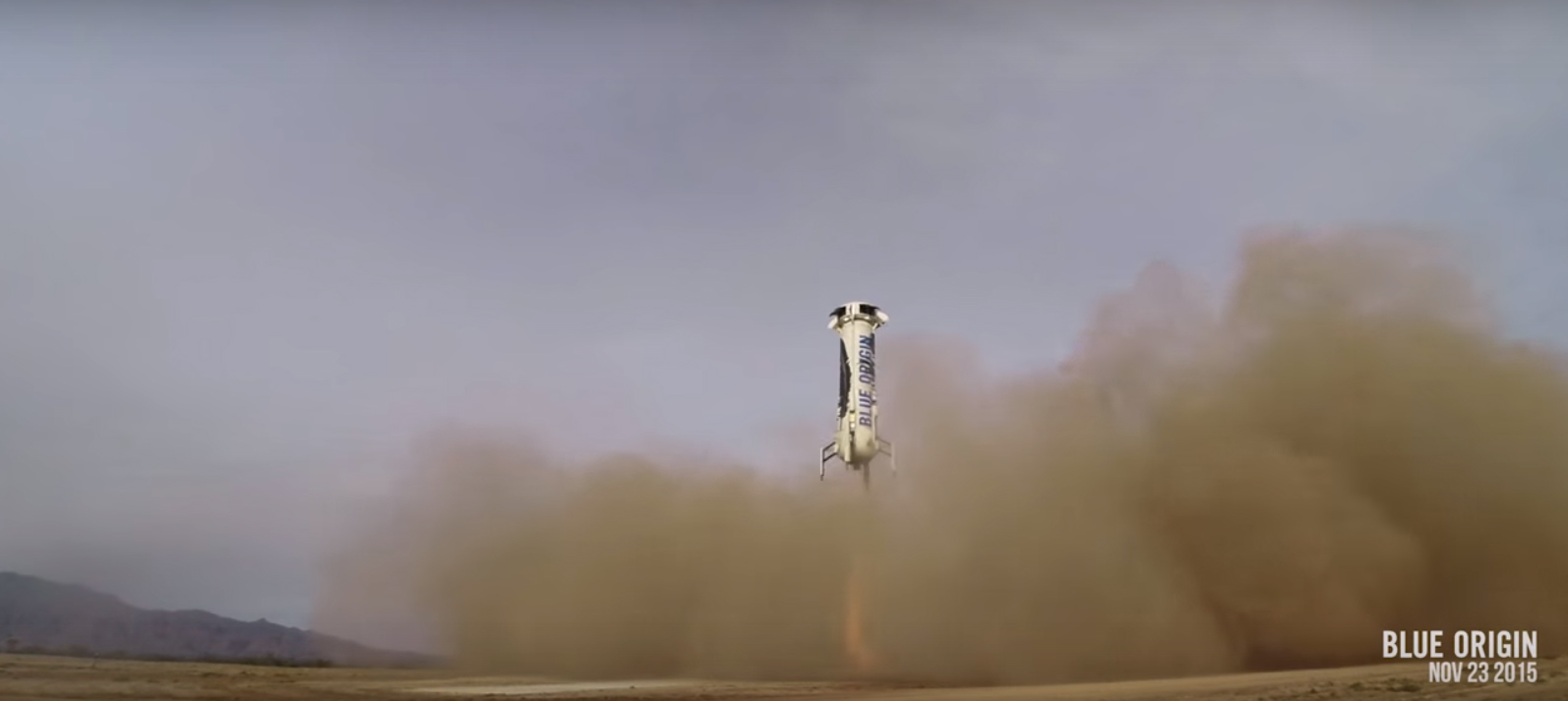
Space travel has come a long way since Russian cosmonaut Yuri Gagarin orbited Earth in 1961. However, the one thing that has eluded scientists thus far is a rocket that can be used multiple times. Though that may not sound like a big deal, it is for companies that want to make suborbital travel available to everyone. That's because a large proportion of the cost goes towards building the rocket which only flies once. It is, therefore, no wonder that Blue Origin's successful launch and landing of the world's first reusable rocket is causing such excitement.
Called New Shepard in honor of Alan Shepard, the first American in space, the rocket lifted off from the company's launch facility in Van Horn, Texas at 11:21 AM CT on November 23rd. It flew up to the planned altitude of just over 100.5km (329,839 feet), before heading down for a picture perfect landing just four and a half feet away from the center of the landing pad. What's amazing is that the entire journey was completed in a speedy quick eleven minutes!

The fully reusable space vehicle comprises of two sections - A pressurized crew capsule that is large enough to accommodate six astronauts and a booster fitted with a BE-3 engine that provides the rocket with 110,000 pounds (over a million horsepower) of thrust. Similar to any other rocket, both the capsule and booster launch simultaneously and accelerate for about two and a half minutes before the engine cuts off and the two vehicles separate. However, instead of haphazardly falling back to Earth and landing in the ocean like most rockets, New Shepard's booster autonomously deploys its drag brakes and the engine re-ignites allowing it to make a perfect vertical landing.
Meanwhile, the crew capsule enters the atmosphere separately subjecting its passengers to five times the force of gravity before deploying three parachutes to ensure a safe and soft landing. What's cool is that New Shepard's BE-3 engine is fueled by liquid oxygen and liquid hydrogen and therefore releases water, not harmful carbon emissions.

Though this is the first time a rocket has been able to make such a landing, critics argue it is possible because New Shepard is a suborbital rocket. This means it is designed to reach just the edge of space, a distance of about 100 km and therefore does not need much power to return. They believe rockets that can successfully land after going into orbit and perhaps even beyond, to geostationary transfer orbits, is much more challenging given they need to be larger and more powerful.
However, Blue Origin's founder Jeff Bezos believes that the hardest part of a successful vertical landing and reusability is the final landing — A feat New Shepard was able to achieve with high precision.

But while the rocket's success brings Blue Origin closer to its goal of lowering the cost of space travel, there is still some time before it will be able to welcome tourists. The company now plans to conduct additional unmanned flights using the same rocket to test if it can land safely multiple times. After that, there will be further test flights, this time with an experienced crew on board. Only when it is all deemed completely safe, will the first six tourists be able to make the journey of their lifetime - To the edge of space and back!
Resources: compositesworld.com,space.com, techchrunch.com